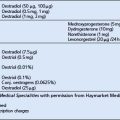CHAPTER 12 INFECTIOUS DISEASES
WHOOPING COUGH
Whooping cough is now rare. After a catarrhal phase, it presents as an increasingly severe and paroxysmal cough. Send a nasopharyngeal swab for diagnosis. A differential white count shows a marked lymphocytosis. The treatment of pertussis is largely symptomatic. Erythromycin given for 10 days prevents spread of the illness. It should also be given to non-immunised child contacts (for pertussis vaccine, see p. 335). Admit if symptoms are severe (can cause apnoea in the very young).
MENINGITIS
Diagnosis
SCARLET FEVER
GLANDULAR FEVER (INFECTIOUS MONONUCLEOSIS)
The incubation period is usually 7–10 days, occasionally longer.
CHICKENPOX
Chickenpox is a common childhood illness in general practice, occurring usually in small epidemics.
The incubation period is 2–3 weeks.
After infection with chickenpox, the varicella-zoster virus remains dormant in dorsal root ganglia. Reactivation causes shingles (see p. 197).
INFLUENZA
Influenza commonly occurs as a winter and spring epidemic.
The incubation period is 24–48 hours.
Management
MALARIA
Diagnosis
History.
Prevention
Drug regimen.
The choice of antimalarial depends on the area visited, and the advice changes from time to time depending on local resistance of the Anopheles mosquito to chloroquine. For up-to-date advice, refer to the travel guides published regularly in the free GP magazines or ask the patient either to telephone the Medical Advisory Service for Travellers Abroad (MASTA) (see p. 357) or obtain online advice at www.preventingmalaria.info.
COLD SORES
Diagnosis
History.
HSV-1 infection usually affects the lips, tongue, anterior buccal mucosa or nostrils. It is more common in children. It starts with painful ulcers or vesicles which form singly or in clusters and is often seen during another upper respiratory tract infection. The vesicles progress to crusts and often become secondarily infected, forming patches of impetigo (see p. 134).
Management
SHINGLES
The rash of shingles is due to a reactivation of the chickenpox virus.
The incidence of shingles increases with age and is also more common in the immunocompromised.
Diagnosis
History.
The patient experiences tingling, paraesthesia or burning pain in the distribution of a single dermatome (see p. 353). This is followed 24 hours later by the appearance of the rash, starting with erythema, then maculopapular and vesicular lesions and progressing to pustules, crusts and, finally, scars.
Shingles is always unilateral. It is most likely to occur on the trunk, but the face is often affected.
Management
BOILS
The boil, or furuncle, is a common skin infection, occurring even in people with adequate hygiene.
Diagnosis
Management
HEPATITIS
Hepatitis B is acquired parenterally, e.g. by blood transfusion, needlestick injury or sexually.
Diagnosis
Management
HIV/AIDS
Over 53 000 people in the UK are estimated to be HIV-positive, with about 6600 new cases per year. The main sources of transmission are sexual and through blood-to-blood contact. All persons who are sexually active should be advised on the prevention of HIV and AIDS. Safe- and low-risk sex should be promoted (see p. 2).
Pre-test counselling
The follow-up appointment
PYREXIA OF UNKNOWN ORIGIN (PUO)
LYME DISEASE
History.
MEASLES
The incubation period is 2 weeks.
Diagnosis
History and examination.
Upper respiratory features predominate initially, with conjunctivitis, rhinitis, otitis media and fever as well as Koplik’s spots on the buccal mucosa (discrete, small, white spots). This is followed 24–48 hours later by the appearance of the dusky pink macular rash, initially on the face and spreading peripherally.



